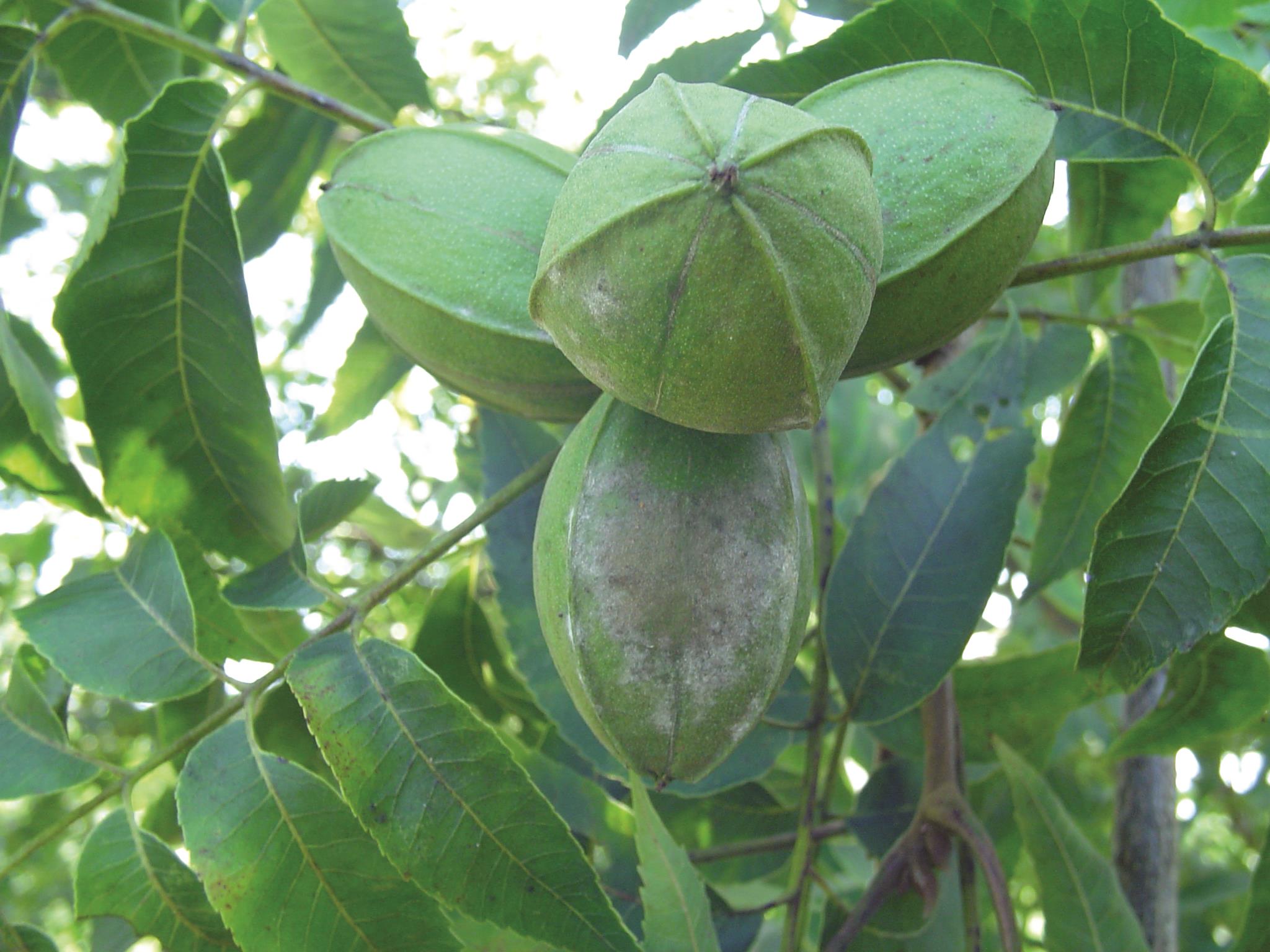Disease Gallery
Disease Details
Powdery Mildew
Microsphaera penicillata or alni?
The fungus that causes powdery mildew can infect both leaves and nuts but under typical orchard conditions it is observed much more frequently on nuts. Generally, powdery mildew does not cause significant crop damage, but it can reduce nut quality in severe infections. The disease is sometimes a problem on pecan foliage in greenhouses and nurseries. Powdery mildew occurs sporadically in Oklahoma and rarely is a serious disease in the state.
The life cycle of all species of powdery mildew fungi is nearly identical. These fungi overwinter as small black fruiting bodies (cleistothecia) or as fungal threads (mycelium) on leaf debris and on stems, spurs, or dormant buds of plants. In the spring, the cleistothecia produce spores that initiate primary infections on susceptible hosts. Secondary spores are produced from these initial infections and cause additional infections. Spores produced on over wintered mycelium can also start spring infections. The result of infection is the appearance of a white, powdery growth on the leaf surface. It is composed of fungal threads (mycelium) and chains of small summer spores. After the fungus has become established, small black fruiting bodies are produced. This completes the life cycle of the fungus.
The fungus is first visible on nuts as a white powdery coating. As the nuts age, the white fungal growth disappears, but the nut shuck develops a brownish patina instead of the typical bright green. It occurs on foliage and nuts alike and appears as a superficial powdery white growth. Early-infected nuts may remain small and have an early shuck split and shriveled kernels. In some other states, it sometimes causes defoliation.
